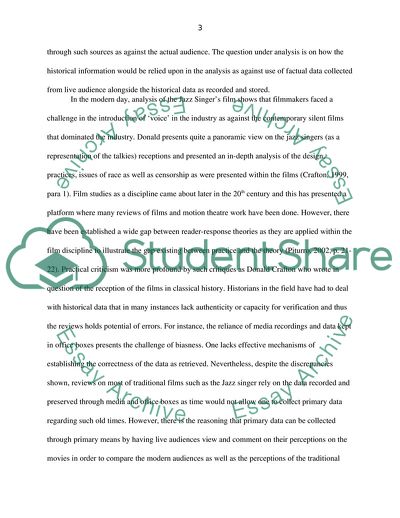Cite this document
(Donald Crafton and the Jazz Singer Essay Example | Topics and Well Written Essays - 2000 words, n.d.)
Donald Crafton and the Jazz Singer Essay Example | Topics and Well Written Essays - 2000 words. https://studentshare.org/visual-arts-film-studies/1809801-how-does-the-film-historian-donald-crafton-question-and-revise-the-received-history-of-the-jazz-singers-reception
Donald Crafton and the Jazz Singer Essay Example | Topics and Well Written Essays - 2000 words. https://studentshare.org/visual-arts-film-studies/1809801-how-does-the-film-historian-donald-crafton-question-and-revise-the-received-history-of-the-jazz-singers-reception
(Donald Crafton and the Jazz Singer Essay Example | Topics and Well Written Essays - 2000 Words)
Donald Crafton and the Jazz Singer Essay Example | Topics and Well Written Essays - 2000 Words. https://studentshare.org/visual-arts-film-studies/1809801-how-does-the-film-historian-donald-crafton-question-and-revise-the-received-history-of-the-jazz-singers-reception.
Donald Crafton and the Jazz Singer Essay Example | Topics and Well Written Essays - 2000 Words. https://studentshare.org/visual-arts-film-studies/1809801-how-does-the-film-historian-donald-crafton-question-and-revise-the-received-history-of-the-jazz-singers-reception.
“Donald Crafton and the Jazz Singer Essay Example | Topics and Well Written Essays - 2000 Words”. https://studentshare.org/visual-arts-film-studies/1809801-how-does-the-film-historian-donald-crafton-question-and-revise-the-received-history-of-the-jazz-singers-reception.


